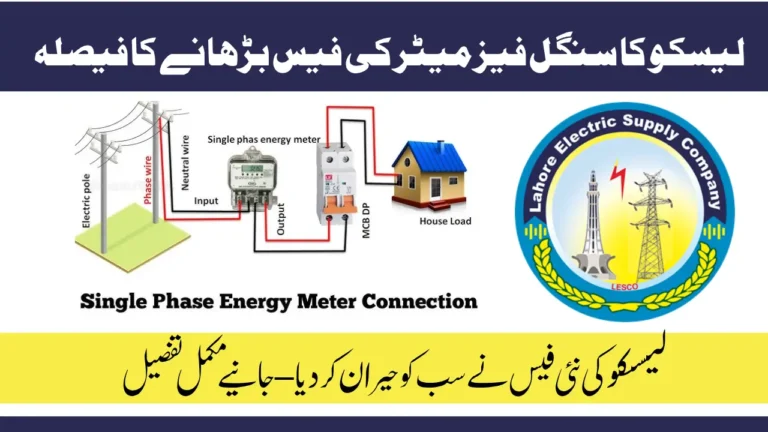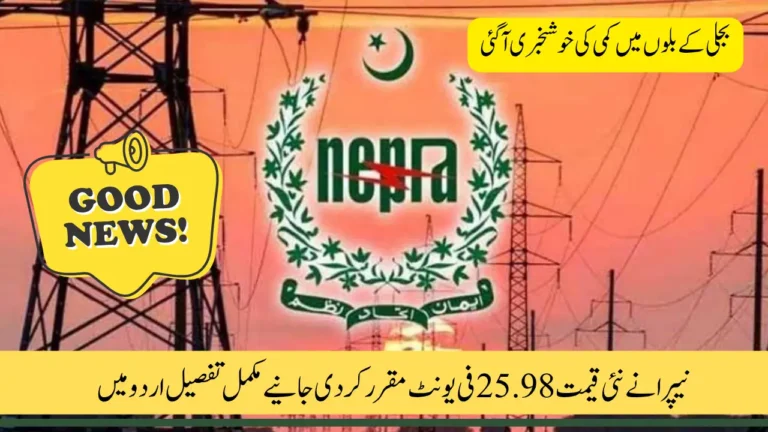
Solar Panels Policy Update 2025
Solar Panels Policy Update 2025: Big news for those installing solar panels in Pakistan as the government launched New Solar Policy Pakistan 2025. Net metering is being abolished under the new Solar Policy 2025 and is now being replaced by gross metering. The main reason for this change is the loss of Rs 103 billion to the government, which under the old policy, solar consumers had to buy electricity at a higher rate.
Under the new policy, consumers who now return solar electricity to the national grid will be paid only Rs 11.33 per unit, while old consumers will still be able to sell electricity at Rs 27 per unit. Whatever the government electricity rate is in the future, only one-third of it will be given to solar consumers, which is an attempt to bring a new and balanced system.

The government has announced that 8500 megawatts of solar electricity will be added to the national grid in the next phase. This policy will be presented to the cabinet after approval from NEPRA. If you are thinking of installing solar or are already a user, be sure to read this entire article so that you can get accurate and complete information about every aspect of the new policy.
Read More: Electric Bike Subsidy Pakistan 2025: Govt Offers Rs. 50,000 Subsidy & Interest-Free Loans – Full Details Here
What Is Changing: Net Metering Replaced by Gross Metering
Under the existing net metering system, solar panel users are able to offset their electricity bills by selling extra power to the national grid. However, the government has decided to shift towards gross metering, where users will sell all the electricity they generate at a fixed buyback rate without offsetting their usage.
This transition is being introduced to control financial losses and balance the cost of electricity production and distribution in the long term.
Why the Government Is Ending Net Metering
According to official sources, net metering has placed a heavy financial burden on the government, causing an estimated loss of Rs. 103 billion. This is because solar users have been selling back electricity at high rates, even as the cost of generation and subsidies has increased.
To fix this imbalance, the new solar policy will introduce gross metering, making it more sustainable for the national power sector.
New Solar Buyback Rate Set at Rs. 11.33 per Unit
Under the New Solar Policy Pakistan 2025, the new buyback rate for electricity returned to the grid by solar panel users will be Rs. 11.33 per unit. This means users will be paid this fixed amount for each unit of solar electricity they send back to WAPDA or their respective power distribution companies.
This rate is much lower than the previous compensation rate of Rs. 27 per unit, which many existing users have been benefiting from.
Relief for Existing Solar Panel Users
The government has decided that existing solar panel owners will continue to receive Rs. 27 per unit as per their original agreements. This protection is likely to last until their contracts expire or until further policy updates are made.
However, new applicants who install solar panels after the policy is enforced will be subject to the new gross metering model and the Rs. 11.33/unit rate.
Future Buyback Rates Will Be One-Third of Market Electricity Rate
According to officials, going forward, the buyback rate for solar electricity will be one-third of the national electricity tariff. This formula ensures the solar power rate stays aligned with the country’s energy market and protects against future financial stress.
For example, if the per unit electricity price becomes Rs. 30 in the future, the solar buyback rate would be set around Rs. 10 per unit.
Read More: Wapda Bill Check Online in Pakistan Step-by-Step Guide to View, Download and Pay Electricity Bill
Government’s Goal: 8500 MW Solar Power in National Grid
The Power Division has set an ambitious goal to add 8,500 megawatts (MW) of solar energy to the national grid. The plan is to expand renewable energy capacity without overburdening the country’s electricity sector financially.
By encouraging solar generation through updated policies, the government hopes to reduce reliance on expensive fuel-based power and ensure a sustainable future.
Read More: BISP Registration Check by CNIC, Verify Status, Eligibility & Get Approved Faster
Next Steps – NEPRA and Cabinet Approval Required
The New Solar Policy Pakistan 2025 will first be sent to NEPRA (National Electric Power Regulatory Authority) for approval. Once approved, it will be forwarded to the Federal Cabinet for final review and enforcement.
This step-by-step process ensures that the policy is in line with national energy goals and transparent in implementation.
Summary
The New Solar Policy Pakistan 2025 introduces big changes that all current and future solar panel users in the country should know about. While existing users will continue to benefit from old rates, new users will face updated rules under the gross metering system.
If you’re planning to install solar panels soon, it’s important to understand how this policy will affect your savings and electricity management. The shift to gross metering may reduce earnings per unit, but it also aims to bring stability and fairness to Pakistan’s energy system.
Read More: BISP July 2025 Payment Reactivated Nationwide – CNIC Check, Glitch Fix & Collection Guide
FAQs – New Solar Policy Pakistan 2025
What is the major change in the New Solar Policy Pakistan 2025?
The new policy replaces net metering with gross metering, where all solar electricity will be sold to the grid at a fixed rate without offsetting consumption.
Why is the government ending net metering in Pakistan?
Net metering caused a financial burden of Rs. 103 billion, so gross metering is being introduced to reduce losses and create a sustainable system.
What is the new buyback rate for solar electricity?
Solar users will now receive Rs. 11.33 per unit for electricity sent to the grid under the gross metering model.
Will old solar users also get Rs. 11.33 per unit?
No. Existing users will continue to receive Rs. 27 per unit as per their original net metering agreements.
How will future buyback rates be calculated?
In the future, the solar buyback rate will be one-third of the national electricity tariff at that time.
How much solar energy does the government plan to add to the grid?
The Power Division plans to add 8,500 megawatts of solar electricity to the national grid.
Is the new solar policy already approved?
Not yet. It will first go to NEPRA for approval, then be presented to the Federal Cabinet for final confirmation.






